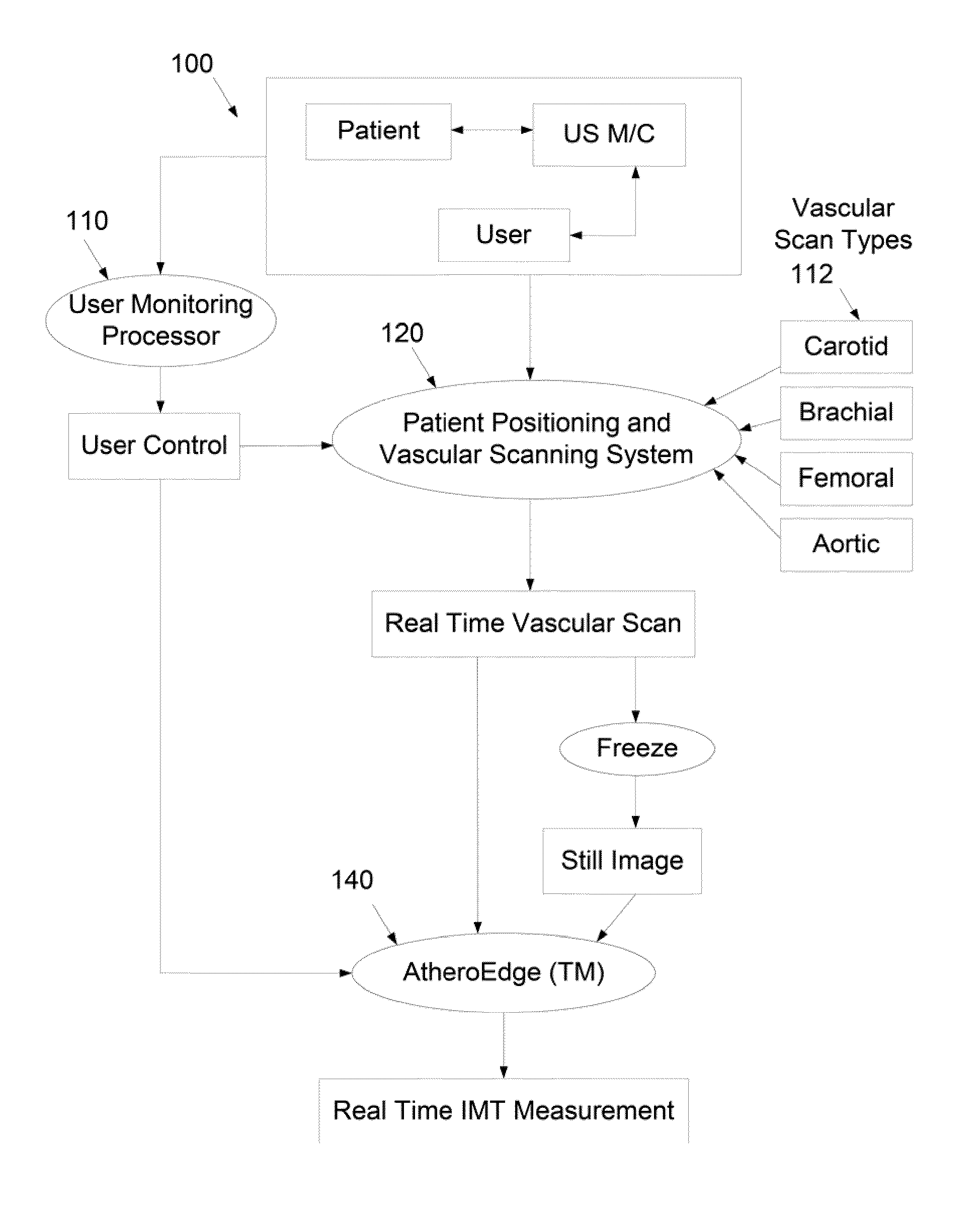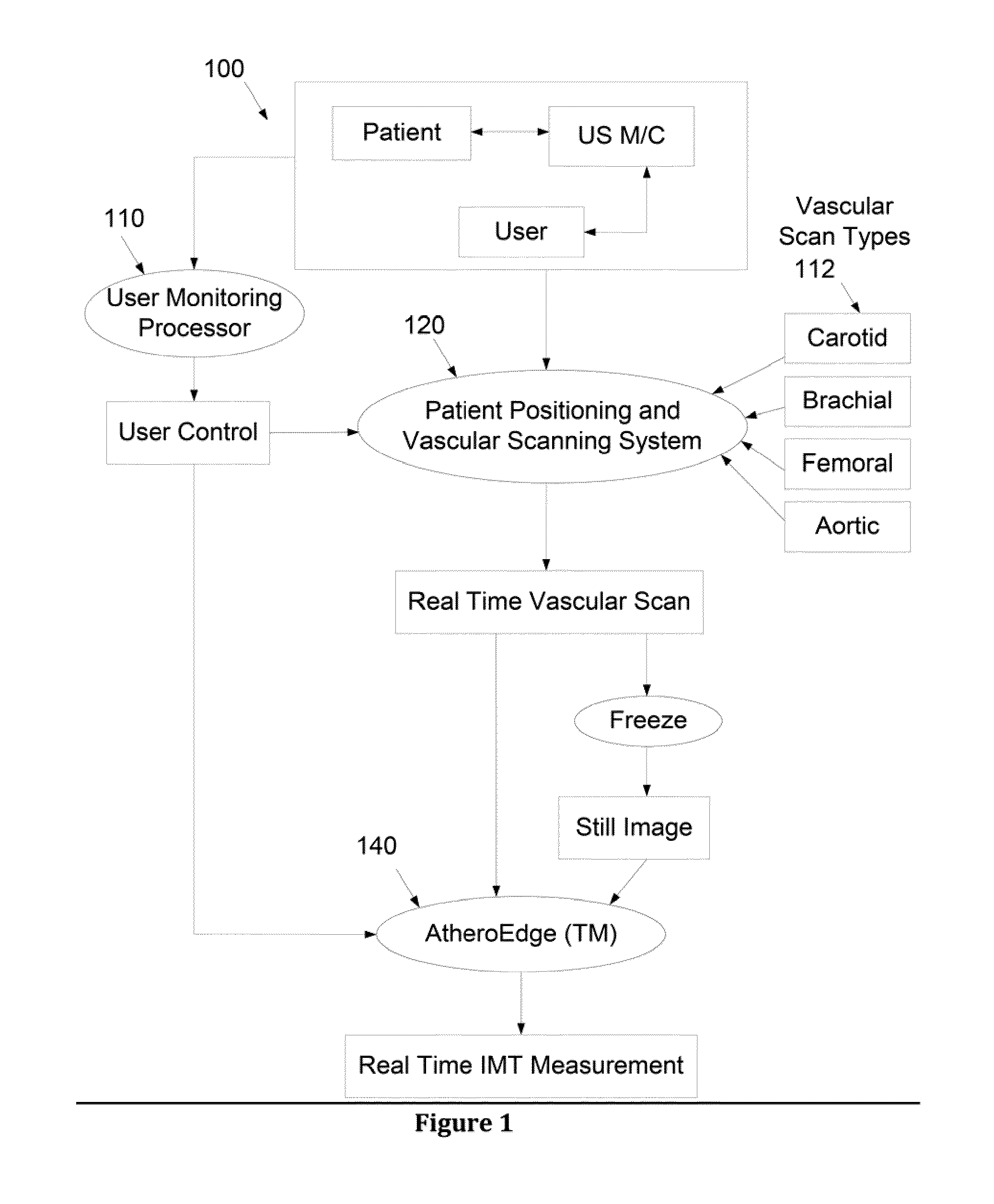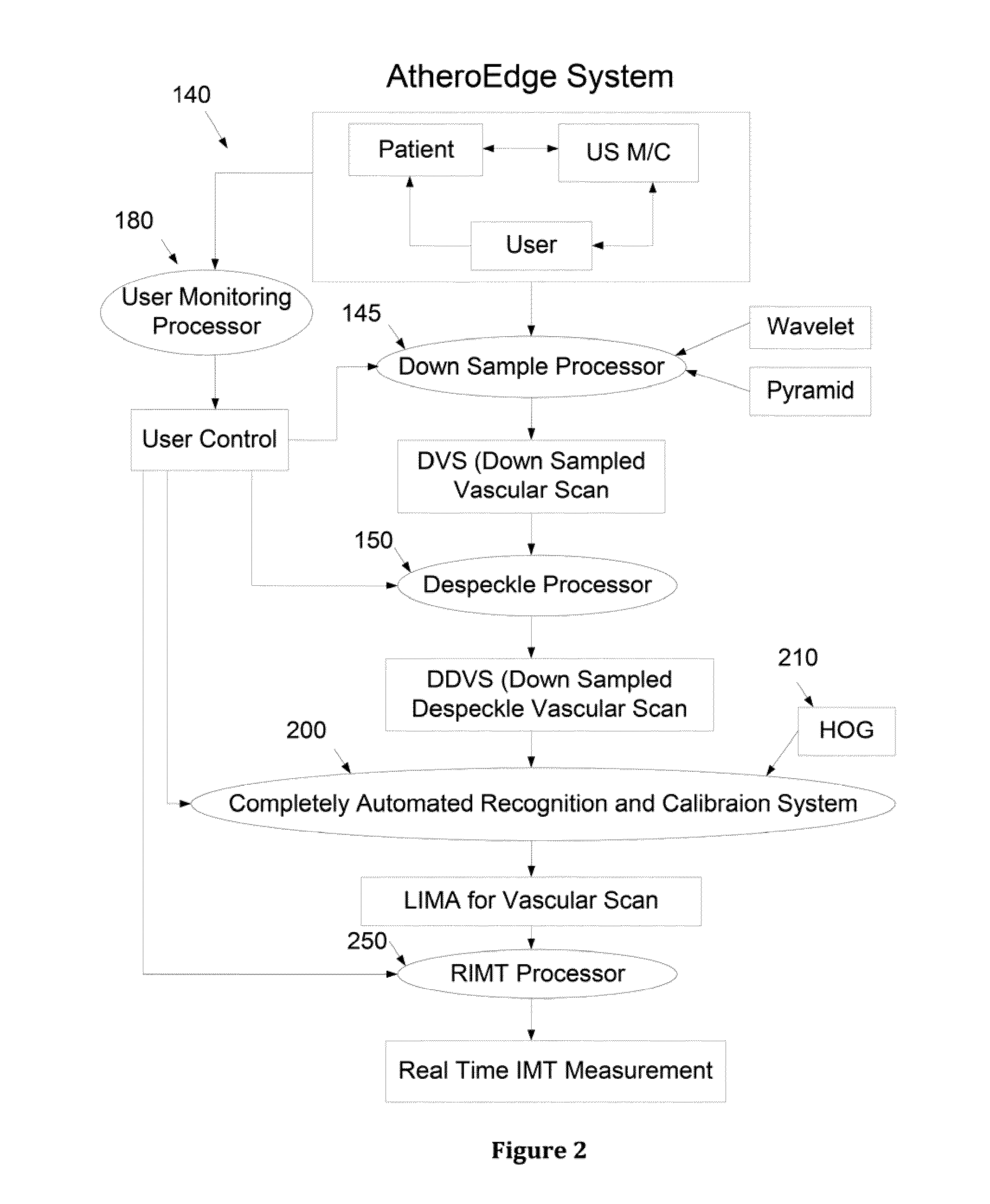The automated recognition process is challenging given the
Jugular vein in the neighborhood.
Since the
ultrasound vascular scans do not always have the vessel orientation horizontal with respect bottom edge of the image, manual methods can
pose a further challenge towards the
region of interest estimation.(6) Guiding Method for the Calibration
System: Since the recognition is followed by the calibration process, the calibration
system becomes very robust since the calibration
processing is done in the
region of interest determined by the automated validation embedded
recognition system.
The borders between the three classes ideally represent the LI and MA borders but since the
pixel intensity along the edge is not always uniform, this is often not the case.
In fact,
ultrasound images are typically noisy images and can be affected by backscattering in the lumen.
Another factor that prevents the use of this
ideal solution (i.e., using the raw borders between the classes as the LI and MA profiles) is that the image was cropped so as to contain the entire guidance zone in a rectangle, and in many cases contains sections of the image that are found below the ADF profile and / or farther above in the lumen.
This problem is amplified in the case of inclined or curved arteries, since the rectangle containing the entire guidance zone assumes a more extended height and hence contains more tissue structures not found in the original guidance zone.
These problems can lead to a jagged border between two classes, the presence of numerous small sections of one class enclosed inside a larger section of another class and / or a border that does not correctly run along the true LI and MA borders.
The first challenge in the refinement process is to automatically find the correct class that corresponds to the intima and media
layers (IMclass).
This error can be due to the fact that the intima and media
layers acquire a dark aspect in the
ultrasound image and therefore the MSC classifier correctly identifies the two classes whose border gives the MA profile but associates the pixels belonging to the artery wall as part of the lumen, and therefore does not correctly identify the LI border.
Though conventional methods are generally suitable, conventional methods have certain problems related to accuracy and reliability.
IMT
estimation having a value close to 1 mm is a very challenging task in ultrasound images due to large number of variabilities such as: poor contrast, orientation of the vessels,
varying thickness, sudden
fading of the contrast due to change in
tissue density, presence of various plaque components in the intima wall such as lipids,
calcium, hemorrhage, etc.
Under normal resolutions, a 1 mm thick media thickness is difficult to estimate using stand-alone
image processing techniques.
Over and above, the
image processing algorithms face an even tighter challenge due to the presence of speckle distribution.
The
manual handling of such a repetitive
work flow of IMT screenings is tedious, error-prone and subject to lot of variability.
Case (b) is difficult to implement, because it is difficult to identify the LI and MA borders with heavy speckle distribution and the inability of ultrasound
physics to generate a clear image where the semi-automated or automated
image processing methods are used for IMT
estimation.
Besides that, the
calcium deposit in the near walls causes the shadow.
However it can cause a small decrease in resolution and blurring because of the averaging nature.
Since the ultrasound vascular scans do not always have the vessel orientation horizontal with respect bottom edge of the image, manual methods can
pose a further challenge towards the region of interest estimation.(4) Guiding Method for the Calibration
System: Since the recognition is followed by the calibration process, the calibration
system becomes very robust since the calibration
processing is done in the region of interest determined by the automated
recognition system.
The borders between the three classes ideally represent the LI and MA borders but since the
pixel intensity along the edge is not always uniform, this is often not the case.
In fact, ultrasound images are typically noisy images and can be affected by backscattering in the lumen.
Another factor that prevents the use of this
ideal solution (i.e., using the raw borders between the classes as the LI and MA profiles) is that the image was cropped so as to contain the entire guidance zone in a rectangle, and in many cases contains sections of the image that are found below the ADF profile and / or farther above in the lumen.
This problem is amplified in the case of inclined or curved arteries, since the rectangle containing the entire guidance zone assumes a more extended height and hence contains more tissue structures not found in the original guidance zone.
These problems can lead to a jagged border between two classes, the presence of numerous small sections of one class enclosed inside a larger section of another class and / or a border that does not correctly run along the true LI and MA borders.
The first challenge in the refinement process is to automatically find the correct class that corresponds to the intima and media
layers (IMclass).
This error can be due to the fact that the intima and media layers acquire a dark aspect in the
ultrasound image and therefore the MSC classifier correctly identifies the two classes whose border gives the MA profile but associates the pixels belonging to the artery wall as part of the lumen, and therefore does not correctly identify the LI border.
 Login to View More
Login to View More  Login to View More
Login to View More 


